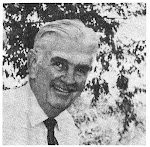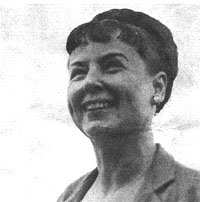The diligent detective work of curator Joan Hoffman has uncovered full color illustrations done by Lucille Webster Holling when she and her husband, Holling, undertook an assignment in Texas. [They’re reproduced at the bottom this site.] She found and purchased the postcards from a seller on eBay, and they recently arrived.
These postcards were published about 1941, Joan believes. “They are like the Indian dancers [Holling] painted at the new Hilton Hotel in Lubbock, Texas, at the end of 1929. This was a speedy assignment, as Holling and Lucille arrived in Lubbock on Christmas Eve and completed the job by the hotel’s opening on New Year’s Eve.”
After arriving at the new Hilton Hotel in Lubbock, “They decided to do the huge dining room walls in different Indian dances which they had seen in New Mexico. Lucille started the dining room paintings, while Holling began the cartoon sketches for the three walls of the coffee shop. It is not clear if Holling had a part in the sketching and painting of the Indian dances, if Lucille also helped with the cartoons, or if they both just worked wherever to get the job done in a short amount of time. But the postcards [with the exception noted below] are just credited to Lucille.”
Joan also mentions there is a series of paintings of Indian craftsmen, of which she has five. But, she says, “I have no idea how many different ones there are in each series.
The commentary on the back of the Yucca Kachina is interesting because the yucca was considered lucky. The back of that card states, “Indians of northern Arizona and western New Mexico (mainly Hopi and Zuni) believe in sacred Kachinas, beings who live in the spirit World. From December through July these Kachinas leave their homes to visit mankind, bringing such blessings as rain for corn crops. It is a sacred duty, fraught with risk, for pueblo men to impersonate these Kachinas in seasonal ceremonies. The performer feels that he himself becomes the spirit, having its mysterious powers, when he dons the mask. There are hundreds of Kachinas with forms of birds, animals, reptiles and natural forces. Each has its own ceremonials. Half the cultural life of these Indians revolves around spiritual values of Kachinas, their songs and dances. Kachina dolls make pueblo children familiar with each Kachina. The Kachina pictured here wears a Yucca-leaf skirt and is known as “He Who Wears a Yucca Kilt.” This useful plant has long been essential to these Indian peoples. (This one of a series of Southwest Indian dancers designed by L.W. Holling, on Yucca veneer.)”
The Corn Dancer postcard may not have been designed by Lucille Holling. While the text is similar to the others, it does not give her credit.
Joan Hoffman’s work is “ephemera archeology” of the first order – finding and securing 70-year-old postcards and archiving them for posterity. Congratulations!-
Sunday, January 23, 2011
Subscribe to:
Posts (Atom)








